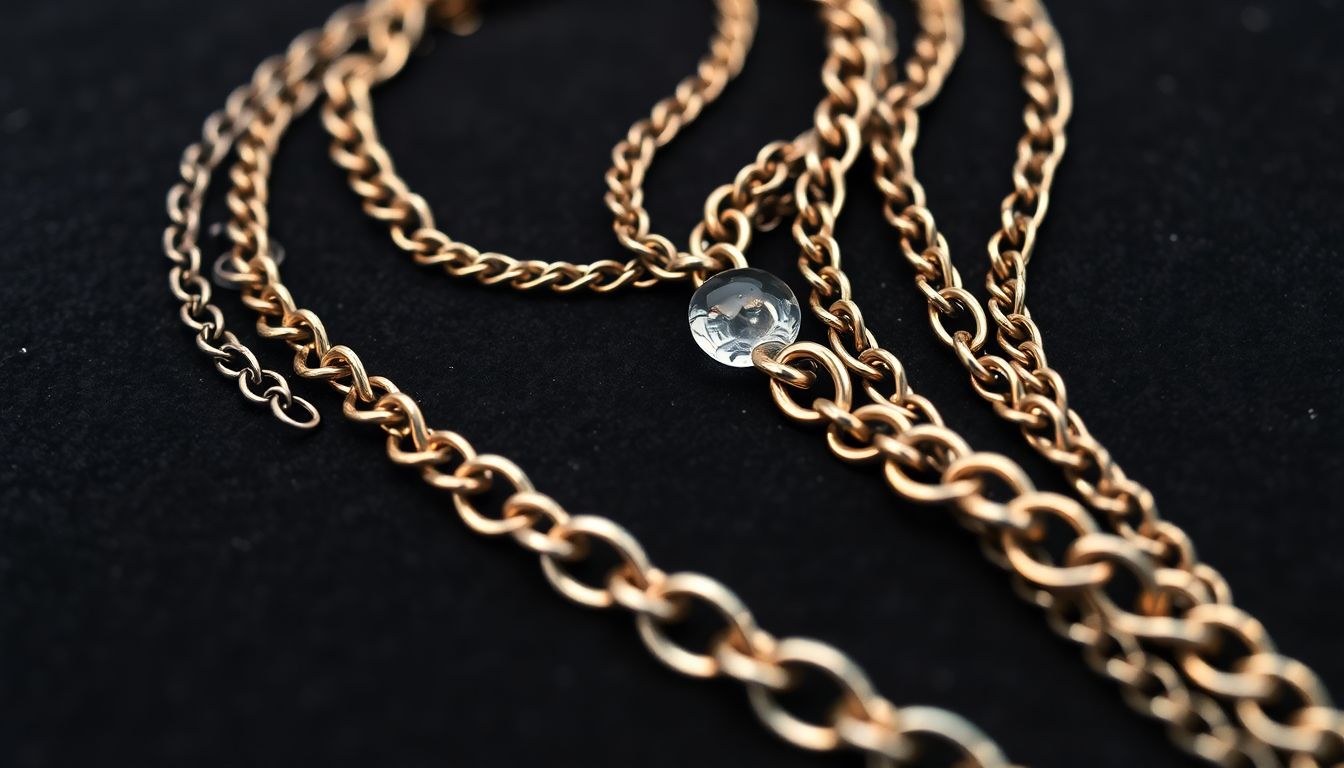Have you ever wondered how to make your own bracelets? Chain bracelets are really a simple, versatile way of making your style. Every one of these bracelets comes in styles without end. They’re adjustable.
That is the all-encompassing introduction to making chain bracelets: Everything about the types of chains, materials, and techniques for making them-there are tips for beginners included!
Knowing the Various Types of Chains for Bracelets
Chains form the basis of most bracelets. It adds to the strength of a chain and, of course, its beauty. But the structure of the chain matters as well.
Cable Chains
Cable chains are something that has existed in jewelry history. Very simple designs really make them friendly user, even to beginners, as links can be round or oval. It gives a feeling of sturdiness but is quite flexible.
Curb Chain
Curb chains are flattened links, always interlocked. This style is appropriate for big and bulkier designs. A flashy variant can be found in the Miami Cuban links. This chain catches the light.
Figaro Chain
Figaro chains sometimes have a very nice pattern: one big link followed by a number of small ones. This comes from Italy. A lot of people prefer it because of its very good look.
Ball (Bead) Chain
Ball chains are distinctly constructed; they are made of links with ball-shaped beads. This can be often utilized in making charm bracelets. Pretty uncommon in appearance.
Snake Chain
A snake chain is smooth and flexible. This provides contemporary styling; however, one must be careful because they sometimes kink. These chains flow flat and smooth.
Choosing the Right Material for Your Chain Bracelet
Materials play an important role in durability, cost, and looks. Metals are a waiver favorite. But what metal will you choose?
Sterling Silver
Sterling silver gives that classic touch, although it is on the pricey side. It tarnishes and looks elegant but also has the advantage of being hypoallergenic.
Gold-Filled
Gold-filled means that a layer of gold covers another metal. It’s cheaper than solid gold. It also resists tarnishing pretty well. Great value provides gold filled.
Stainless Steel
Stainless steel is tough and resists tarnish; it is also hypoallergenic for sensitive skin. The modern look works very well for this as well, making this great to wear daily.
Base Metals (Brass, Copper)
Base metals like brass and copper are inexpensive. The secret is in sealing and plating. It can prevent tarnish and allergies, but these need special care.
Necessary Tools and Supplies for Doing Chain Bracelets
The right tools make the work easier. These tools help you in creating beautiful bracelets. Each tool is important in its own right. Let’s take a look at a few essentials.
Chain Nose Pliers
Chain nose pliers are used to open and close jump rings. There are different sizes available, so choose the one that would fit your jump rings. These pliers are all you need.
Round Nose Pliers
Round nose pliers are used for making loops and curves in wire. Smooth jaws are very important; they protect your wire from being scratched. A pair of round nose pliers will aid in creating shapes.
Wire Cutters
Flush cutters are for making clean cuts. Various kinds work on different wire sizes. Sharp-cutting flush cutters leave a professional look. They are an essential tool for jewelry makers.
Jump Rings and Clasps
Jump rings connect things together. They are either open, closed, or soldered. Clasps can come in lobster, toggle, or magnetic styles; you pick whichever fits your design.
Techniques for Making Beautiful Chain Bracelets
These techniques, when mastered, will put together the bracelets. The steps get from simple and keep on moving to advanced. Let us now go through some of the techniques.
Joining Chains Using Jump Rings
Open the jump rings with care. Close tightly, but not enough to deform the alignment. Don’t threaten the integrity of the chain or you may ruin the project. This will ensure that your bracelet is safe.
Adding Charms and Beads
Charms and beads can be added using jump rings. Wire wrapping or bead caps can also be used. Each way gives a different look. Enjoy your embellishments.
Making it Adjustable Closure
An adjustable closure is useful. Extender chains, sliding knots, or adjustable clasps are all great options. Any of these options will assure the wearer a correct fit.
Adding Wire Wrapping
Wire wrapping adds texture. It also adds to the visual interest. Using thin wire, wrap beads or charms for an engaging design.
Design Ideas and Inspiration for the Chain Bracelets
Need some inspiration? Chain bracelets leave room for endless designs. Hopefully, one inspires you.
Simple Chain Bracelet with One Charm
This basic concept is trending. A delicate chain with one charm makes a statement: its simple elegance. Consider that you can wear this style with anything.
Layered Chains
Different lengths and textures coexist. This layered effect is strong and modern. Combine different types of chains.
Beaded Chain Bracelet
Beads are simply added to the chain. They can either be spaced apart or clustered. Beads provide color and texture. Complete transformation for a chain bracelet.
Bracelet with a Stunning Fastening
Use a decorative clasp for an eye-catching. The fastening becomes an aspect of design. This makes this piece quite rare. There are endless opportunities to be creative with clasps.
Conclusion
Chain bracelets are a huge canvas for creativity. Experiment with design and technique. Designing your unique pieces could be highly rewarding. Show your creations to the world. Utilize all available resources. Go now and realize something special.
